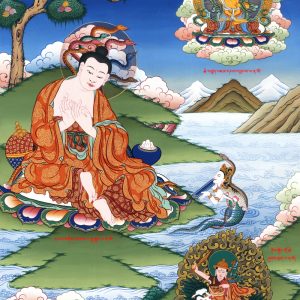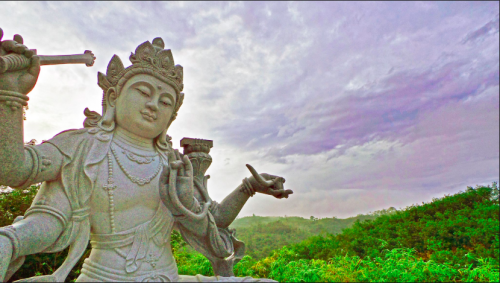What is your reality?
28 Oct
 This post was somewhat inspired by a discussion we had with Swee Keong in Kechara Forest Retreat last Thursday. We were discussing about an aspect of the teachings on self-grasping based on what Rinpoche shared with some students. Swee Keong delved a little into the concept of emptiness from what I gathered. He spoke about it on the basis that it is likened to labelling we impute or place on all experiences and objects. Then, he went on to suggest that since they don’t really exist, then how do we solve this problem? He wondered if the solution lay in the process of unlearning? That is the question that spurred many to answer.
This post was somewhat inspired by a discussion we had with Swee Keong in Kechara Forest Retreat last Thursday. We were discussing about an aspect of the teachings on self-grasping based on what Rinpoche shared with some students. Swee Keong delved a little into the concept of emptiness from what I gathered. He spoke about it on the basis that it is likened to labelling we impute or place on all experiences and objects. Then, he went on to suggest that since they don’t really exist, then how do we solve this problem? He wondered if the solution lay in the process of unlearning? That is the question that spurred many to answer.
I attempted to answer as well and I began by establishing two truths according to Nagarjuna’s view of reality, which is known as Madhyamaka or the Middle Way View. So, I feel it is not a question of learning or unlearning but the perception of reality or the truth. The first truth is that of conventional truth and this is unique to each of us described based on our personal experiences, environment, culture, upbringing, karma and so forth. Some truths are learned like that of experience, environment, culture and upbringing but there are some truths that are inherent in us due to karma. Since they are all different and each truth must contain its own reality and they must all be applicable universally for it to be known as the truth. Unfortunately they are not universal and so, it is not the truth. This lies the problem because we invest a lot of effort and time to establish and reinforce this truth when in reality, it does not really exist.

Arya Nagarjuna’s Middle Way View describes emptiness of inherent existence, the basis of the entire Mahayana Buddhism
Someone mentioned an example of a watch being useful to adults as a tool to tell the time but for a toddler or baby, it’s just useful to chew. I also suggested the example of chocolates being a sweet dessert for people but are poisonous to dogs. Our grasping onto the self-identity is one such truth that is established by the Buddha as non-existent and we impute this identity based on large number of factors such as our physical body, face, voice, thought pattern, likes, dislikes and much more and when we examine each factor, we realise, we cannot actually find an inherent and permanent identity in one factor or in the collection of factors. Hence, the self does not really exist and there is really nothing to protect and cherish.
 In the end, the only truth that is universal is the ultimate truth, which is that all things, phenomena are lacking of inherent existence – emptiness and space itself. That means a person who truly perceive the ultimate nature of reality itself is emptiness and that everything is subject to impermanence and in constant state of flux or change and it is somewhere between the two extremes of nihilism – that nothing really exist and eternalism – everything truly exist permanently. It is said that the ultimate nature of reality is indescribable.
In the end, the only truth that is universal is the ultimate truth, which is that all things, phenomena are lacking of inherent existence – emptiness and space itself. That means a person who truly perceive the ultimate nature of reality itself is emptiness and that everything is subject to impermanence and in constant state of flux or change and it is somewhere between the two extremes of nihilism – that nothing really exist and eternalism – everything truly exist permanently. It is said that the ultimate nature of reality is indescribable.
Hence, Nagarjuna and the Indian pandits devised a contemplative method of negation, which is called Prasangika in order to negate all the ordinary, dualistic views in order to arrive at a conclusion or picture of what this reality is about. This is kinda like how emptiness is described in the Heart Sutra – ie No male, no female, no eye, no ear, no body, no mind, no bodhisattva, no Buddha and so forth. However, all this is intellectual but for someone to realise, it takes tremendous amount of wisdom merits and learning to pierce through the thick veil of ignorance so we are able to perceive the ultimate nature of reality.






No comments yet